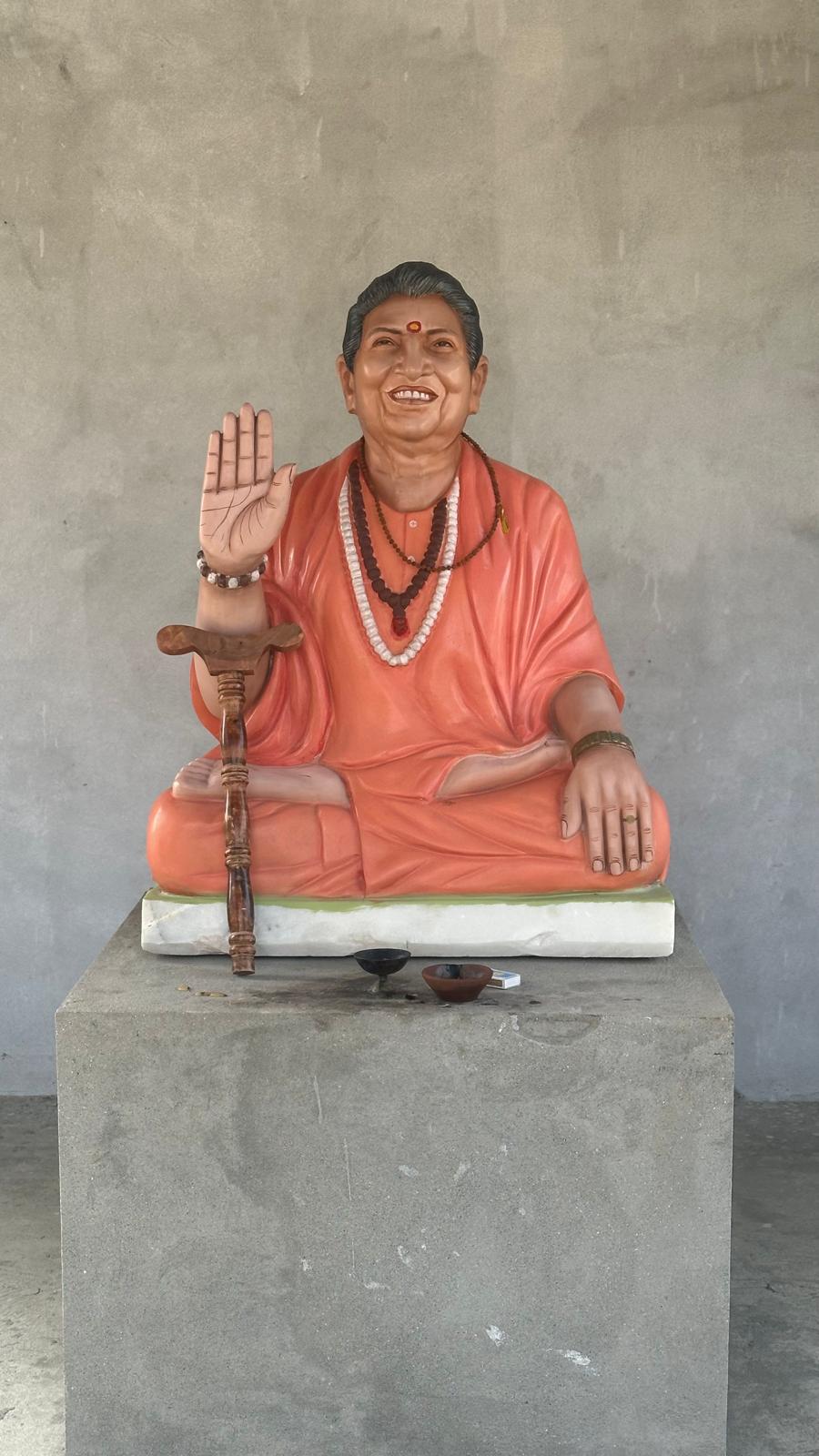5 Day Prana Power Yoga in Shukratal, Haridwar, India
Shri Balaji Yog Vigyan Anusandhan Kendra Mahashakti Siddhpeeth Ashram campus, Shukteerth (Shukratal), Jansath Tehsil, Muzaffarnagar, Uttar Pradesh 251316, India.
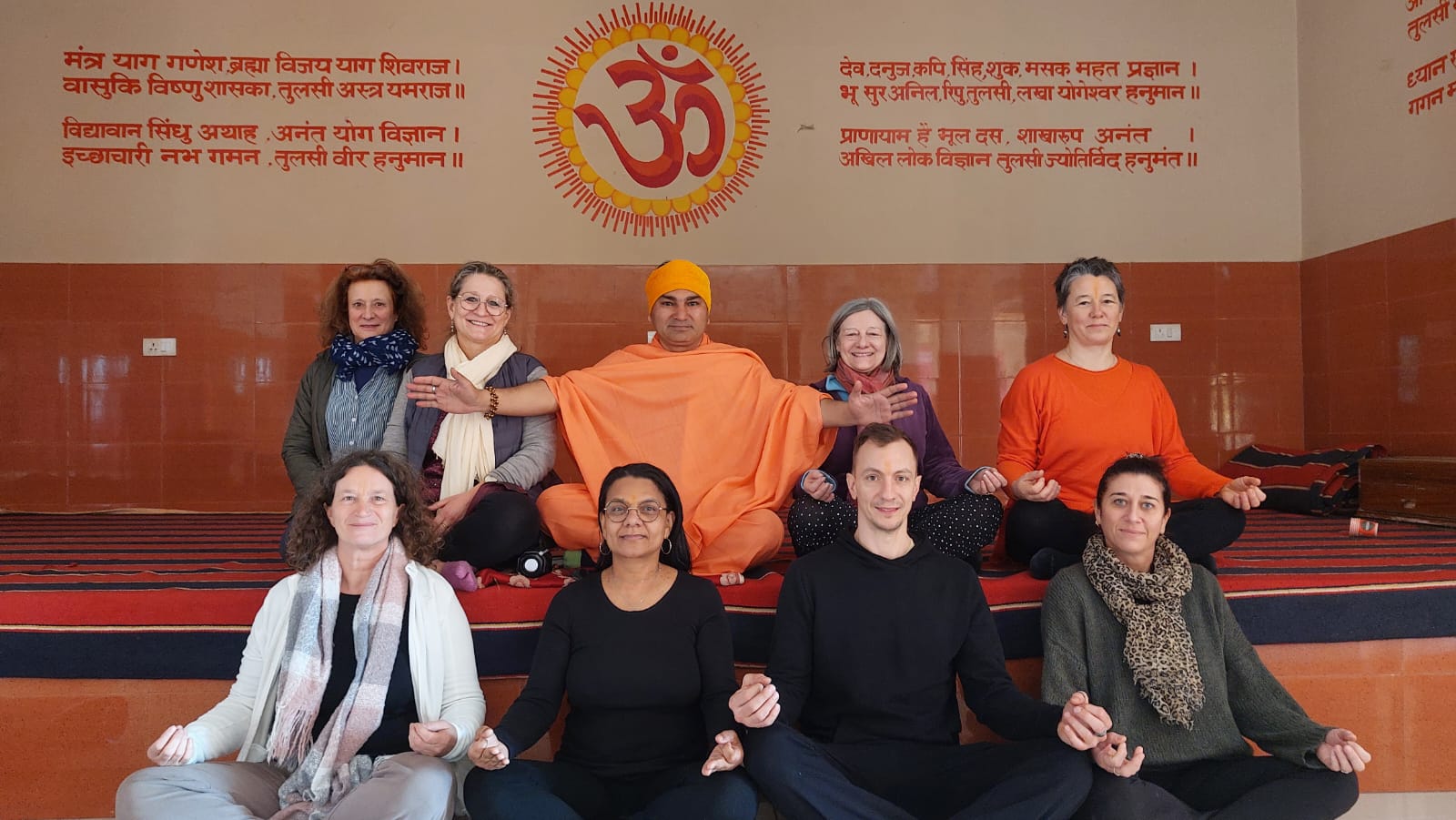
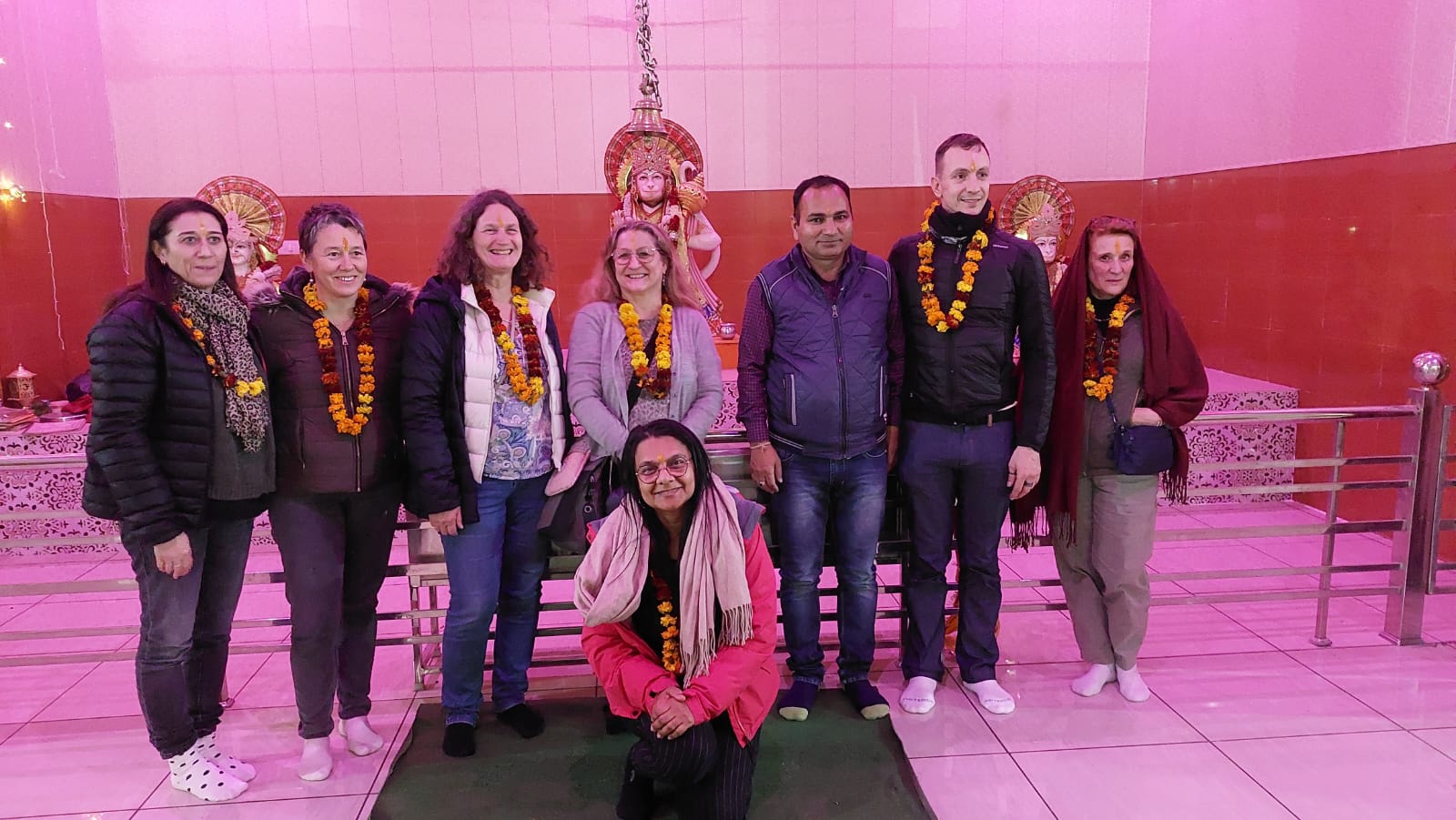
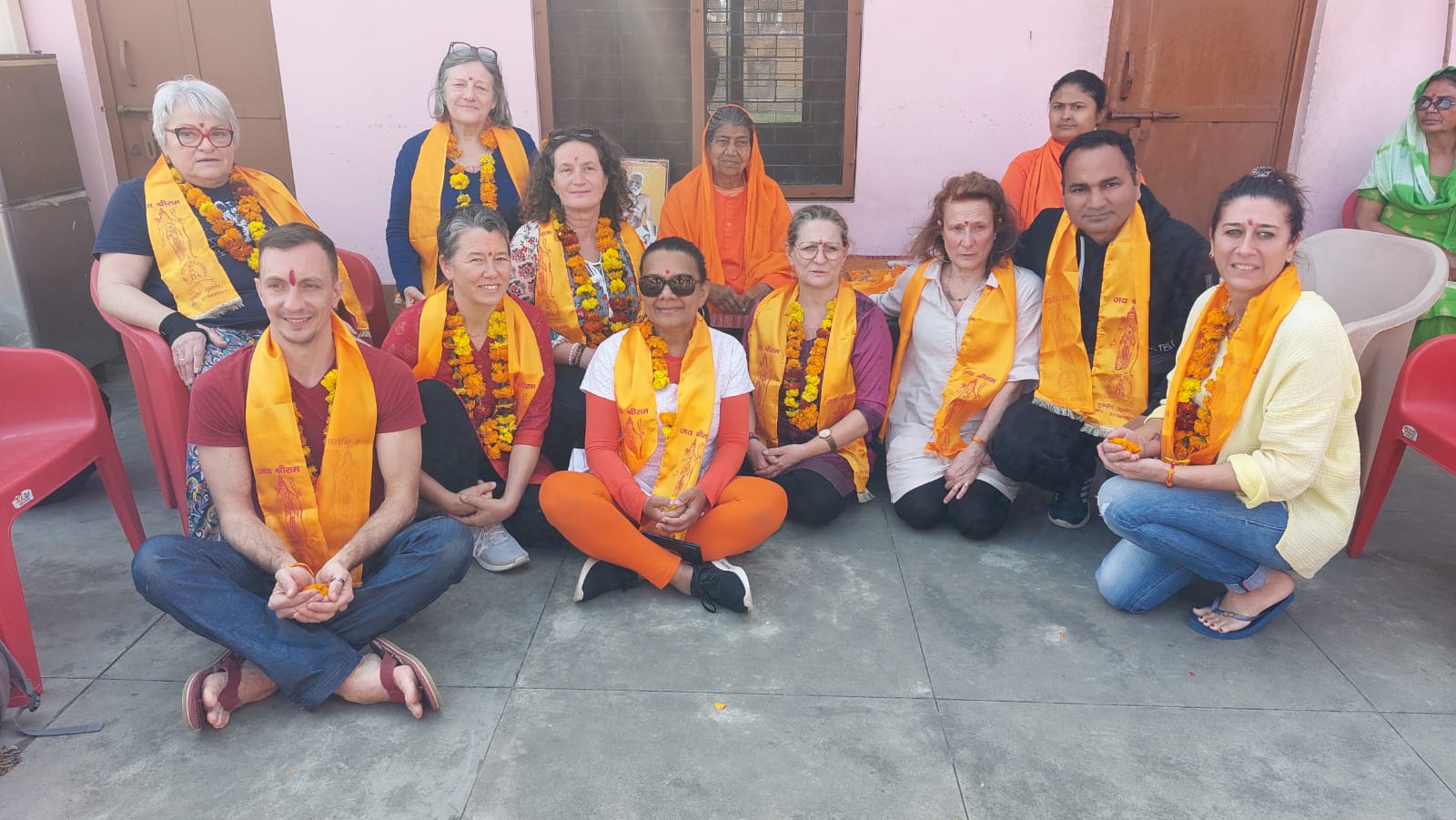
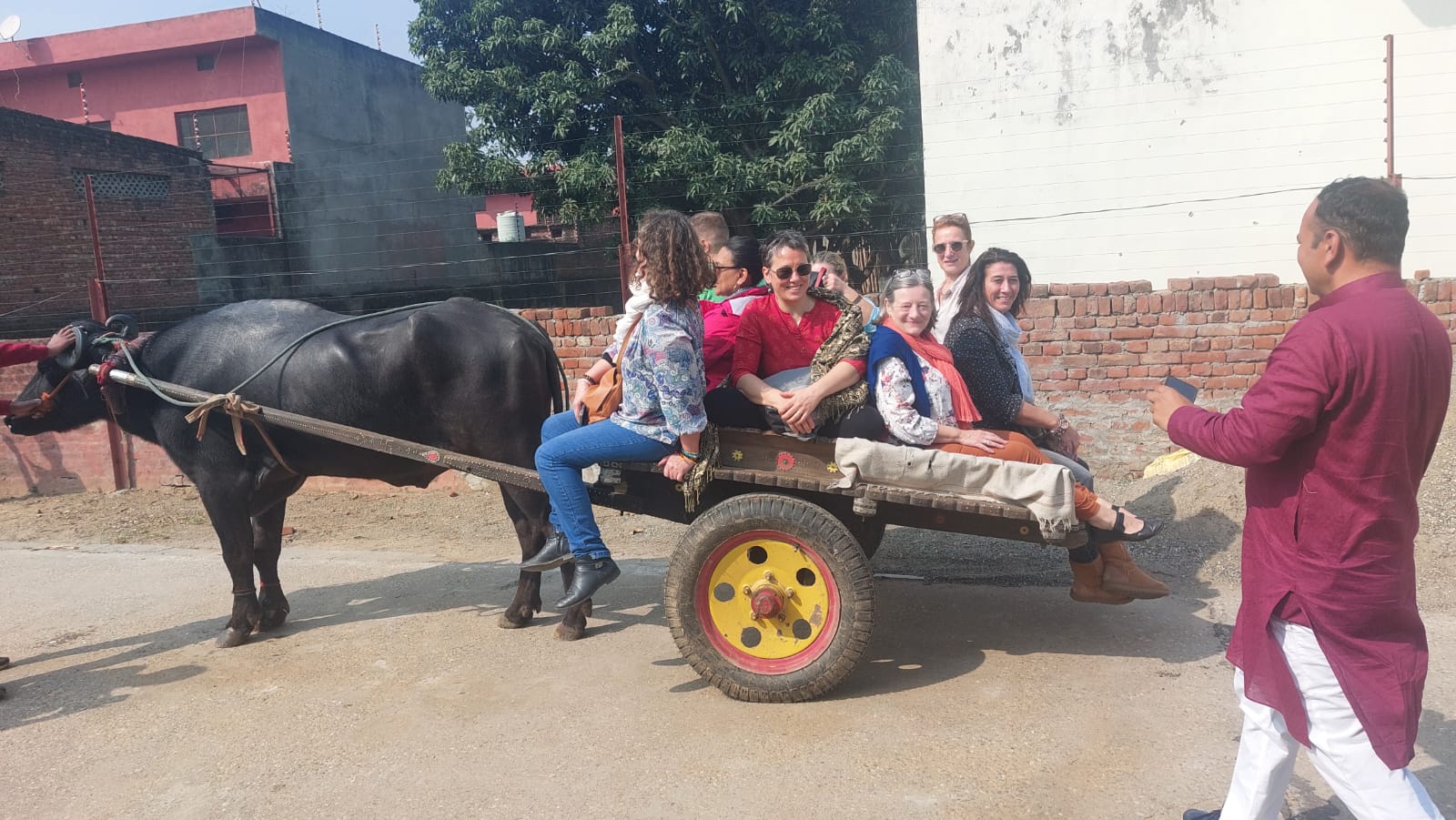
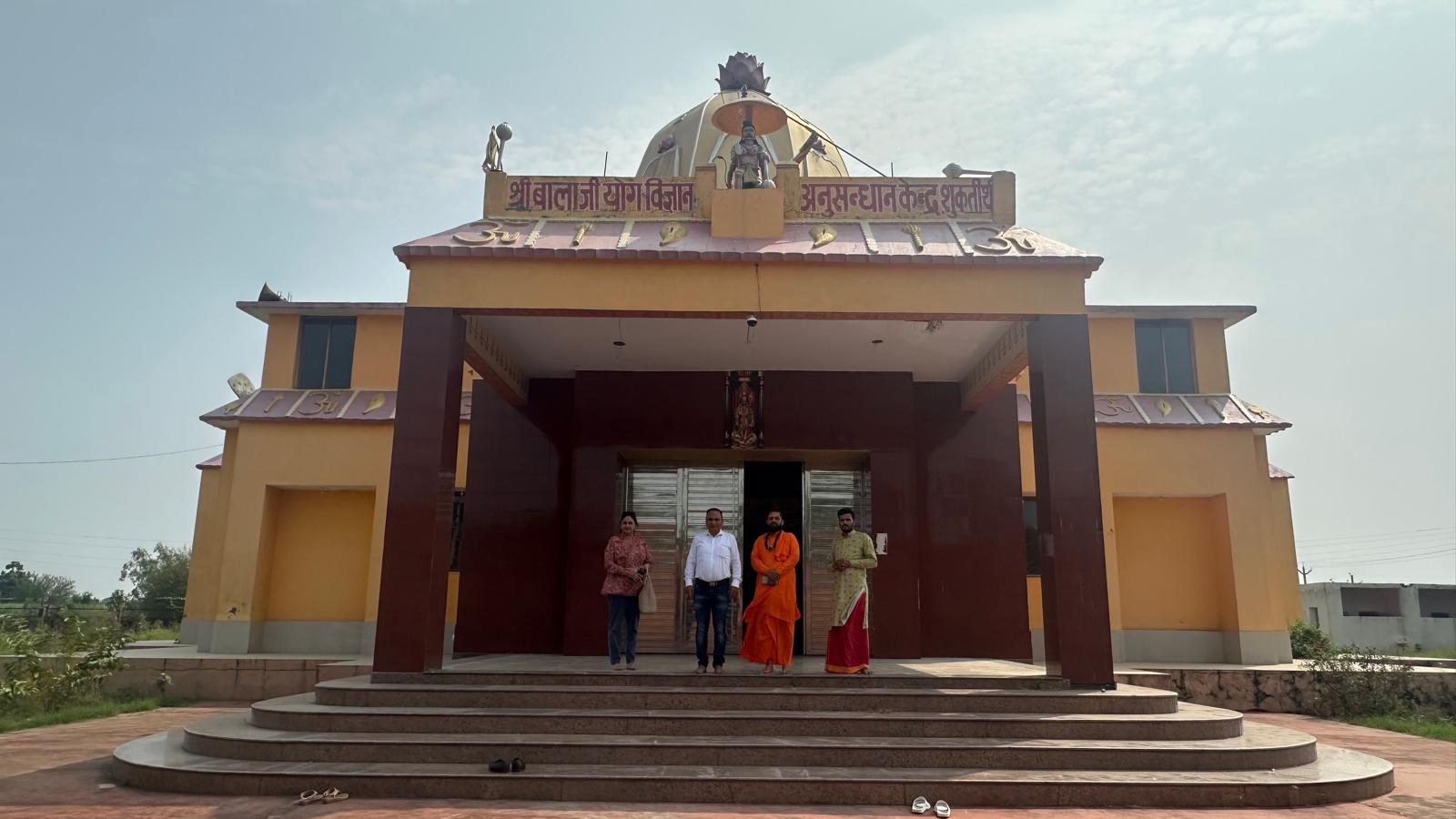
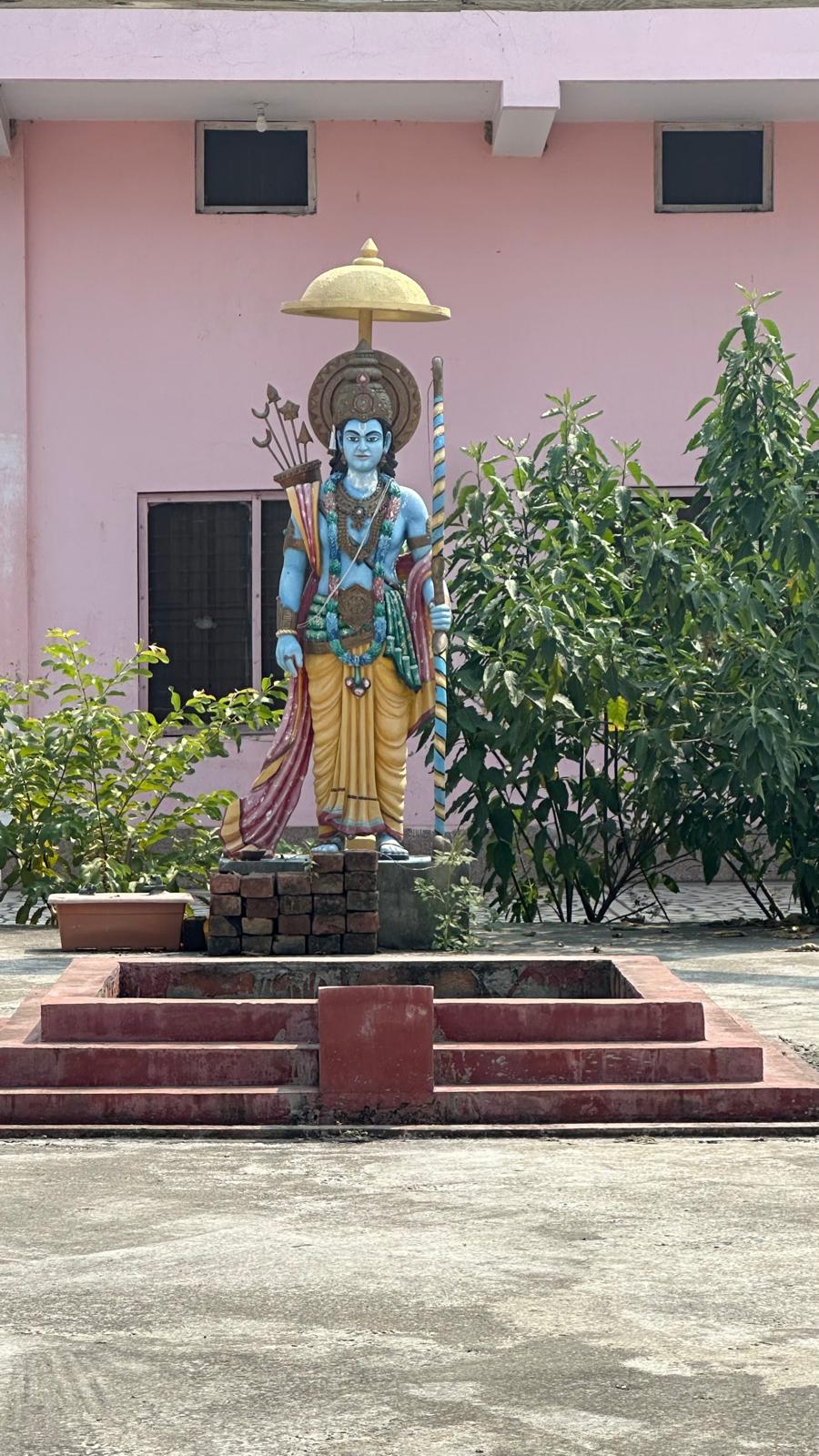
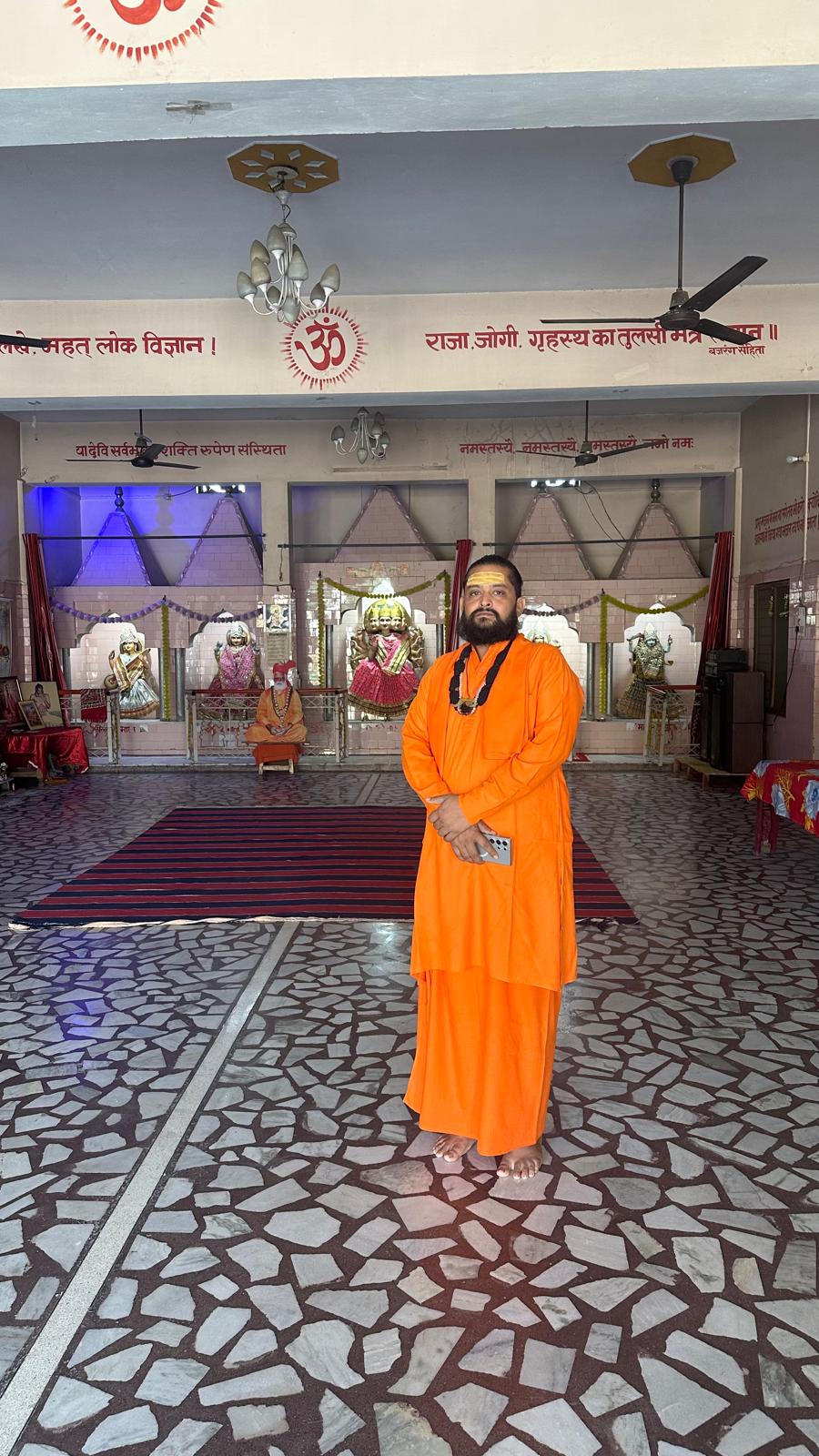
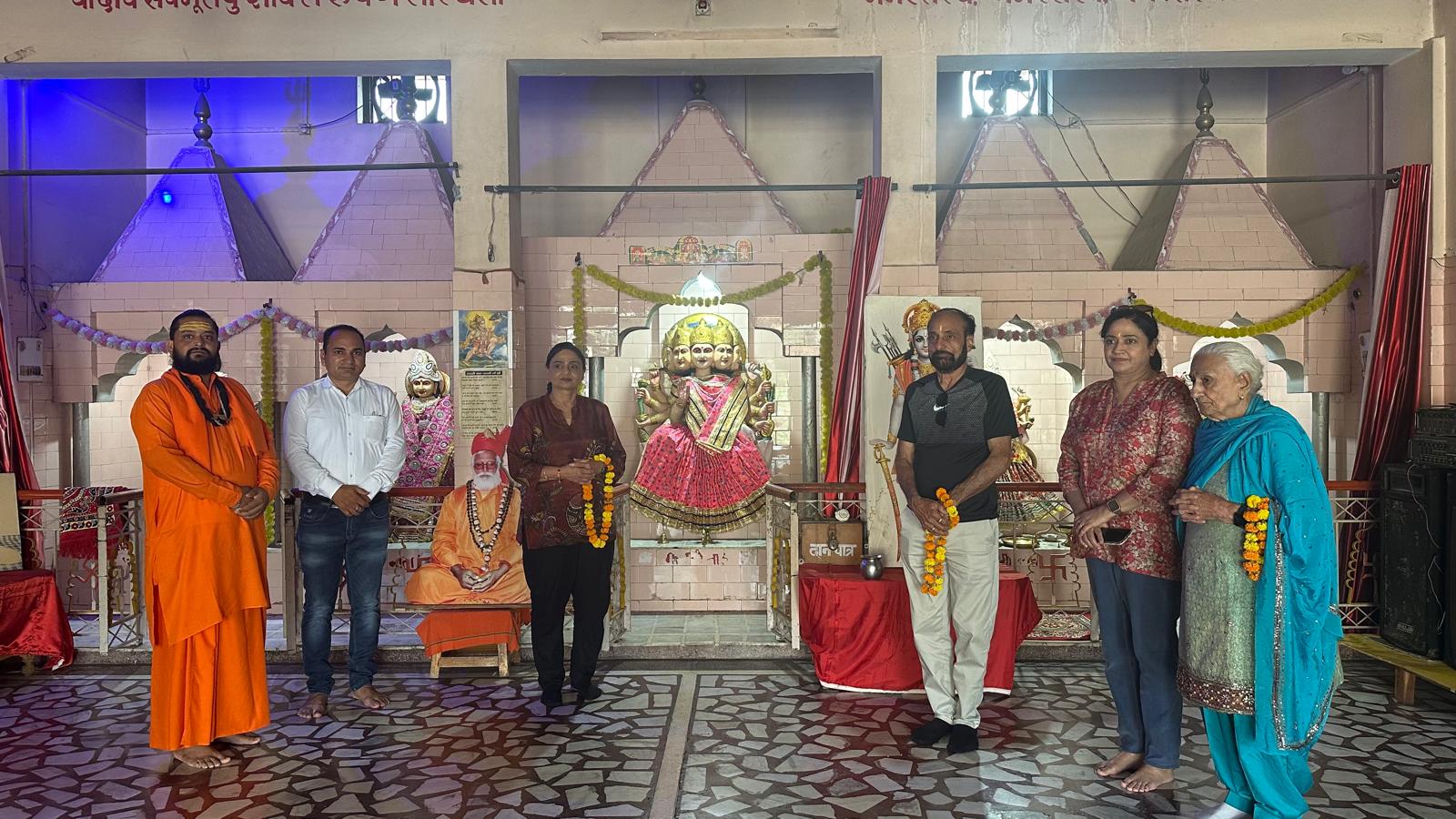
Shukratal, Haridwar, India , India
Description
Set on the quiet plains of western Uttar Pradesh beside the Ganga’s ancient course, Shukratal is one of North India’s revered tirthas. Scripture and oral tradition hold that Śukadeva Goswami delivered the Śrīmad-Bhāgavatam to King Parīkṣit here, establishing Shukratal as a seat of svādhyāya (self-study), bhakti, and satsang. Pilgrims come for aarti, katha and contemplation beneath age-old banyans, visiting small, living temples rather than crowded complexes. Haridwar and Rishikesh lie to the north, so Shukratal enjoys their spiritual current without their bustle—ideal for focused practice and gentle inward retreat.
Shri Balaji Yog Vigyan Anusandhan Kendra (Shri Balaji Yoga Science Research Centre) is a peaceful temple-cum-learning centre dedicated to practical yoga, Vedic rites and community service.
- Setting & ambience: The ochre-gold complex with a lotus-topped dome opens into a cool, marble-patterned hall used for yoga, satsang and fire ceremonies. The inner sanctum features a five-faced deity traditionally associated with Gayatri, garlanded and radiant in pink vastra, with a side shrine to a local saint. A statue of the guru in an abhaya mudra (blessing gesture) welcomes guests—signalling protection, compassion and learning.
- Practice spaces: Pillar-free hall for asana and meditation, havan kunda for fire puja, and quiet verandas for study and reflection.
- Tradition & teaching: The centre integrates prāṇa-led asana, prāṇāyāma, mantra, havan, and seva with practical workshops in Aṣṭāṅga foundations and complementary modalities such as Sujok and selected alternative therapies.
- Community rhythm: Temple aarti at dusk, shared vegetarian meals, respectful silence periods, and optional seva (light service).
5-Day Prana Power Yoga Retreat at Shri Balaji Yog Vigyan Anusandhan Kendra unfolds as a steady, breath-centred immersion that blends disciplined practice with living tradition. Participants arrive to a warm welcome inside the temple precincts, receive a concise orientation to etiquette and the rhythm of the centre, and share a wholesome vegetarian dinner. The first evening deliberately moves slowly so travellers can release fatigue, meet the teaching team, set intentions, and settle into the devotional atmosphere of Shukratal.
Each retreat morning opens with Prana Power Yoga—a breath-first, intelligently sequenced practice that builds heat without haste. Teachers emphasise alignment, bandha awareness and nervous-system balance, coupling progressive vinyasa with focused prāṇāyāma to expand capacity and restore equilibrium. The sessions accommodate all levels through clear cueing and options, inviting stronger practitioners to deepen while ensuring newcomers feel confident and safe. The aim is not mere exertion but the refined experience of prāṇa guiding both movement and stillness, so participants leave the mat grounded, alert and centred for the day’s contemplative work.
The ritual core of the programme is the fire pooja (havan), conducted at the centre’s havan kunda with accessible guidance. Here, mantra, offering and silent attention converge to clarify intention and cultivate gratitude. The rite complements the morning practice by purifying agitation and directing energy towards insight and service, helping the group embody yoga’s inner ethic—not just its outer form. This devotional current continues in the temple’s daily rhythm, and participants naturally attune to it as the days progress.
Skill-building workshops add practical depth to the immersion. An Aṣṭāṅga foundations module demystifies surya namaskar method, breath–drishti coordination and safe transitions, enabling participants to carry sound mechanics into any future practice. A Sujok therapy module introduces hand and foot correspondence points with simple, evidence-informed acupressure sequences for headaches, digestion and stress regulation—tools that can be applied at home or while travelling. A complementary alternative-therapy block rounds out the toolkit with restorative positioning, selected mudrā, guided relaxation and introductory sound work. Across these sessions the emphasis stays pragmatic: learn, practise, and immediately integrate.
Afternoons invite quiet integration rather than constant activity. Short, unhurried visits to nearby temples and spiritually significant spots place the retreat within Shukratal’s sacred storyline—the land where the Śrīmad-Bhāgavatam was first narrated. Gentle walking, brief historical context and moments of darshan encourage contemplative presence over sightseeing. Between excursions, guests have time for journal reflection, reading and rest, allowing the day’s practice and ritual to settle deeply.
As dusk arrives, the community regathers for aarti in the main shrine. The shared lamp offering and mantra ease the mind from doing to being, and a guided evening meditation leads into seated stillness—often beginning with breath awareness before softening into mantra or open attention. A simple vegetarian dinner follows, and the evening closes quietly to support natural sleep and authentic recovery before the next morning’s sādhanā.
The retreat culminates with an integrative practice that threads together breath, alignment, mindful strength and receptive rest, followed by a closing ceremony and blessings in the sanctum. Participants articulate what they will carry forward, receive prasad, and depart with a concise home sādhanā plan shaped by the week’s learning. The overall experience moves in a purposeful cadence—energise in the morning, refine through study, contemplate in place, and surrender into devotion at night—so guests return home physically supple, mentally clear and spiritually anchored, with practical tools they can sustain well beyond Shukratal.
Accommodation
Guests stay in temple-adjacent rooms within a two-storey block connected by a balcony corridor, keeping you close to the practice spaces. Rooms have tiled floors, painted walls, a ceiling fan, accessible power points, and air-conditioning for comfort across the seasons. Bedding is presented with linens and quilts, and beds can be arranged to suit single, double-shared, or triple-shared configurations.
Each room has an attached wet-room style bathroom with a Western toilet, an overhead shower, and a wall-mounted electric geyser providing hot water. The layout supports a smooth retreat routine with straightforward access between lodging and temple activities.
Instructors
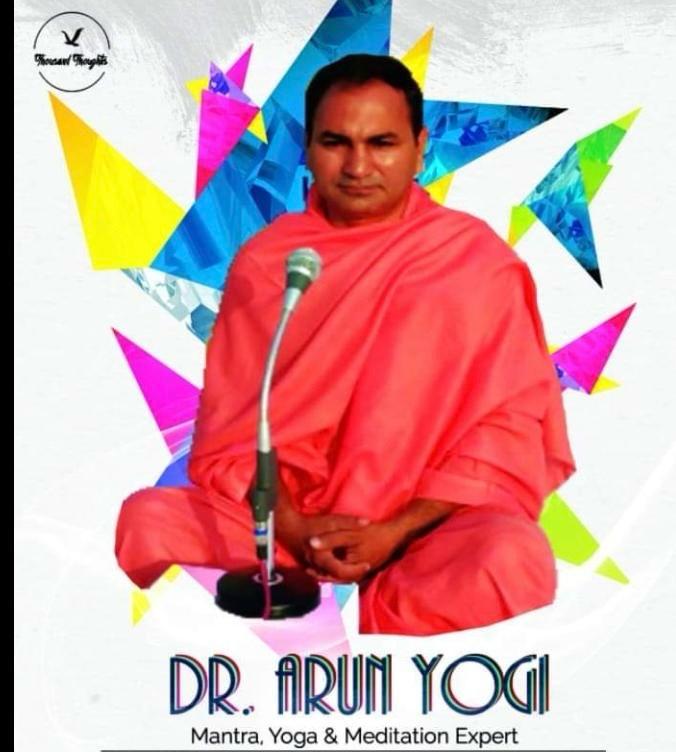
Dr Arun Yogi
Yogacharya Dr Arun Yogi is a credentialled yoga educator and wellness expert with more than 30 years dedicated to yoga and holistic health. Holding an M.A. (Yoga), M.Ed., M.Phil., PhD, and UGC-NET, he brings academic rigour to a clear, hands-on teaching style that prioritises breath-led movement, safe alignment, and techniques students can sustain beyond the mat. Recognised as an expert of Prana Power Yoga, he guides practice through a demonstrate–explain–practise rhythm—making foundations like Bhrāmari Prāṇāyāma approachable for beginners while offering precise refinements for experienced practitioners. His work integrates practical lifestyle guidance—stress regulation, sleep hygiene, and everyday breathwork—so students build steady habits that translate into calm focus, resilient bodies, and lasting wellbeing.
Key features
- Better breath capacity and smoother movement.
- Simple bandha cues for lighter transitions.
- Smart sequencing: warm-up, peak, release.
- Nervous-system tools: box breathing and bhrāmari counts.
- Clear Aṣṭāṅga basics: Surya Namaskāra A/B and core standing forms.
- Safer stepping and hopping techniques.
- Sujok self-care for headache, digestion and stress.
- Supportive add-ons: restorative poses, mudrā, relaxation and sound.
- Guided havan with mantra and intent.
- Evening aarti to close the day.
- Quiet Shukratal immersion and reflective walks.
- Three home sādhanā plans: 20, 40 and 60 minutes.
- A weekly rhythm that avoids burnout.
- Micro-practices for travel and busy days.
- Quick fixes for low energy or stiffness.
- A one-page tracker for breath and practice.
Meal Details
Meals follow a sattvic vegetarian approach that supports steady practice and clear attention. Three meals are served daily—breakfast, lunch and an early dinner—timed around the programme so you practise first and then eat unhurriedly. Flavours are gentle, with seasonal produce, grains and legumes at the core.
Breakfast may feature porridge, poha or upma with seasonal fruit and chai or herbal tea. Lunch is the main meal—typically dal, a seasonal vegetable preparation, steamed rice, roti, salad and a small pickle—while dinner is lighter, often khichdi, soup or a modest vegetable dish with bread.
Herbal tea and hot water are offered at set times, and filtered drinking water is provided (bring a refillable bottle). Vegetarian preferences (e.g., mild spice, lighter dairy) can usually be accommodated with notice. Specialty coffees, packaged snacks, and meals taken outside the centre are not included.
Daily Schedule
Program outline
Day 1 – Arrival & Grounding
- Welcome tea, orientation to the temple etiquette (modest dress, shoes off, mindful photography).
- Settling breathwork, gentle mobility and yoga nidra to arrive after travel.
- Dinner (sāttvic vegetarian) and early lights-out for a clean start.
Days 2-4- Practice, Rituals, Study & Pilgrimage
Morning
- Sunrise Prana Power Yoga (90–105 mins): breath-led vinyasa, progressive Aṣṭāṅga elements, alignment drills, and focused prāṇāyāma (ujjayi/ bhrāmari / nadi shodhana as appropriate).
- Silent breakfast and journal notes (gratitude + intention).
Late Morning / Midday
- Workshop Blocks (rotating focus):
Aṣṭāṅga foundations: Surya Namaskar method, tristhāna (breath–bandha–drishti), safe transitions.
Sujok therapy: palm/foot correspondence, simple acupressure for headaches, digestion and stress.
Alternative therapy sampler: guided relaxation, mudrā sets, marma awareness, sound toning.
- Fire Pooja (Havan): short Agni rite for clarity and purification; mantra participation guided and accessible.
Afternoon
- Rest & Reflection: optional yoga library time or seva.
- Guided Temple Visits & Spiritual Sites: short excursions in and around Shukratal—participate in local darshan, hear brief context about the Bhāgavatam narration, and walk contemplatively.
Evening
- Aarti at the centre; lamp offering and kīrtan in the main shrine.
- Evening Meditation (30–45 mins): breath awareness leading into mantra-based stillness.
- Dinner and optional Q&A with teachers.
Day 5- Integration & Blessings
- Final integrated practice blending breath, movement and seated work; closing yoga nidra.
- Closing circle & blessings in front of the sanctum; distribution of prasad and take-home sādhanā notes.
- Departure after brunch.
Daily schedule
- 05:45 – Herbal tea
- 06:15 – Prana Power Yoga + Prāṇāyāma
- 08:15 – Breakfast (quiet)
- 10:00 – Workshop / Study (Aṣṭāṅga, Sujok, Alternative Therapy)
- 12:30 – Lunch & rest
- 15:30 – Guided visit / seva / self-study
- 18:00 – Aarti
- 18:30 – Evening Meditation
- 19:15 – Dinner & light satsang
- (Exact timings may vary with season and temple schedule.)
Included activities
Twice-daily guided practice (morning dynamic, evening meditative).
Fire Pooja (Havan) with instruction.
Three interactive workshops across Aṣṭāṅga, Sujok and alternative therapy basics.
Temple visits and local spiritual orientation.
Evening aarti and group meditation.
Closing ceremony with blessings and sādhanā handout.
Simple sāttvic vegetarian meals (breakfast, lunch, dinner) and herbal teas.
Optional activities
One-to-one session with the lead teacher.
Personal breath assessment and take-home plan.
Posture clinic (Surya Namaskara tune-up and alignment).
Sujok personalised protocol for common concerns.
Alternative-therapy mini-session (mudrā, guided relaxation).
Extra yoga nidra (deep rest).
Restorative evening stretch class.
Guided japa (e.g., Gayatri mala).
Mantra pronunciation basics.
Kirtan practice circle.
Silent morning walk through temple lanes.
Temple parikrama with brief history notes.
Journal coaching and reflection prompts.
Seva hour (light service at the centre).
Sattvic cooking or herbal tea demo.
Short visit to nearby shrines in Shukratal (subject to time).
Optional excursion to Haridwar aarti (by prior arrangement).
Activities Not Included
Airfare and other travel to/from Shukratal
Visas, passports, and any entry/permit fees
Airport/railway station transfers (unless pre-arranged)
Travel insurance and medical insurance
Special Requirements
What to bring
- Lightweight modest practice wear; shawl for meditation; refillable water bottle.
- Small notebook/pen; any personal Sujok seeds/magnets if you already use them (materials provided for beginners).
- Respectful attire for shrines (shoulders and knees covered).
Retreat etiquette and accessibility
- Shoes off in all temple areas; mindful volume; photography only where permitted.
- Most spaces are ground-level; a few steps lead to the sanctum and platform areas. Please advise in advance if mobility support is required.
Directions
Approx. 30 km from Muzaffarnagar, ~90 km from Haridwar, and ~200 km from Delhi (times vary with traffic). Nearest airports: Dehradun (Jolly Grant, for Haridwar/Rishikesh approaches) and Delhi (international). Taxis can be arranged from either hub; rail to Muzaffarnagar then a short road transfer is common.
October 2025
Book Your Spot
Cancellation Policy

